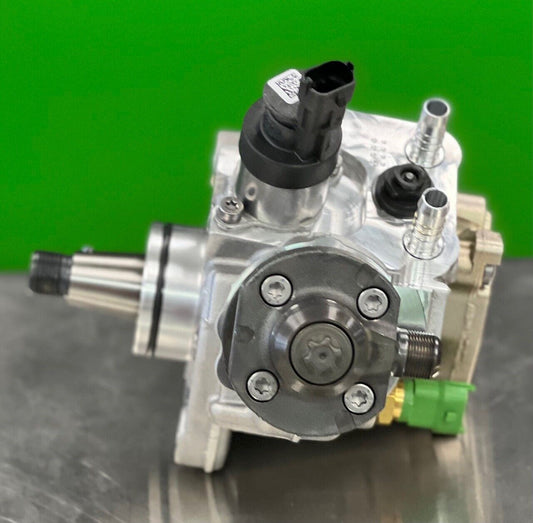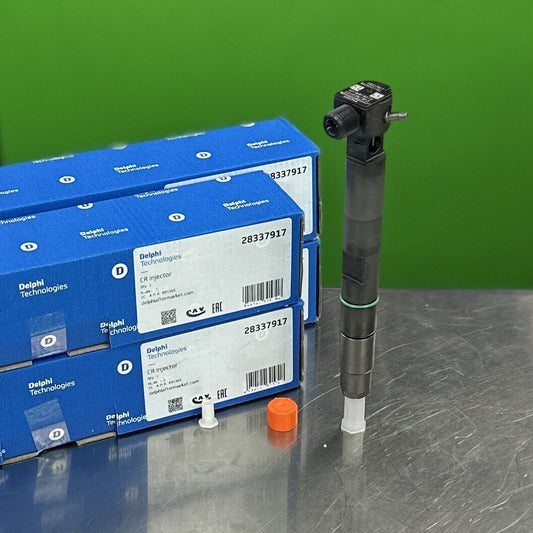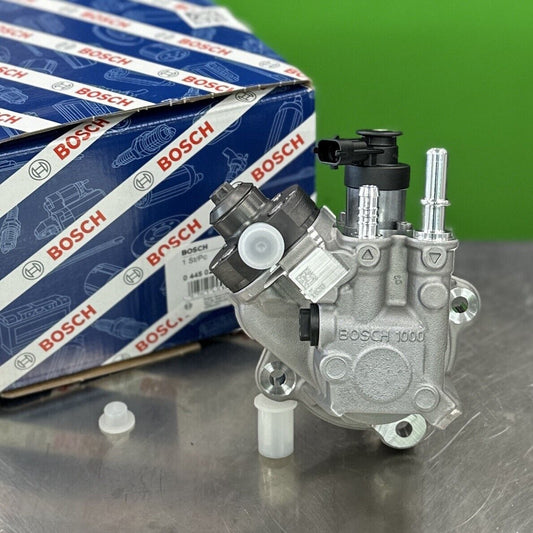Ford 6.7L CC16-19 Turbocharger Troubleshooting: Diagnosing and Solving Common Problems
This article delves into the troubleshooting process for common issues encountered with the Ford 6.7L CC16-19 turbocharger, offering valuable insights to help vehicle owners maintain peak performance and efficiency.
Loss of Power
Loss of power in a vehicle equipped with the Ford 6.7L CC16-19 turbocharger can be a frustrating issue that hampers performance and efficiency. When your vehicle suddenly feels sluggish and lacks the usual power, it's essential to delve into the potential causes behind this common problem. One of the primary culprits for a loss of power could be a boost leak in the turbocharger system. A boost leak occurs when there is an air leak in the system, leading to a decrease in the pressure of the air reaching the engine. This results in reduced power output and can significantly impact the overall driving experience.
Another factor contributing to a loss of power could be a faulty wastegate in the turbocharger. The wastegate is responsible for regulating the boost pressure in the turbo system. If the wastegate fails to function correctly, it can lead to either overboost or underboost conditions, causing a noticeable decrease in power. Additionally, a clogged air filter can restrict the airflow into the engine, leading to reduced power output. A dirty or clogged air filter can disrupt the air-fuel mixture ratio, affecting combustion efficiency and ultimately resulting in a loss of power.
When faced with a loss of power in your Ford 6.7L CC16-19 equipped vehicle, it is crucial to address the issue promptly to prevent further damage and ensure optimal performance. Conducting a thorough inspection of the turbocharger system, including checking for boost leaks, wastegate functionality, and the condition of the air filter, is essential. By identifying and resolving the underlying causes of the power loss, you can restore your vehicle's performance and enjoy a smooth driving experience once again.
Excessive Smoke
Excessive smoke coming from the exhaust can be a troubling sign for Ford 6.7L CC16-19 turbocharger owners, indicating potential issues that require immediate attention. When thick smoke billows from the tailpipe, it often signifies underlying problems within the turbocharger system. One common culprit for excessive smoke is oil leakage into the exhaust system, which can result from a damaged turbocharger seal or worn-out components. This not only affects the vehicle's performance but also poses a risk to the engine's longevity.
To effectively address the issue of excessive smoke, owners must conduct a thorough inspection of the turbocharger system. This involves checking for visible signs of oil leaks, such as residue around the turbocharger housing or exhaust components. Additionally, examining the turbocharger seal for any cracks or damage is crucial in identifying the source of the problem. Prompt action is essential to prevent further damage and ensure the turbocharger operates efficiently.
In some cases, excessive smoke may also be attributed to a malfunctioning turbocharger, where internal components have deteriorated over time. This can lead to oil seepage into the exhaust, creating the telltale smoke. Owners should be vigilant for any changes in exhaust smoke color or consistency, as these can provide valuable insights into the turbocharger's condition.
When faced with excessive smoke issues, it is advisable to consult a professional mechanic or technician with expertise in turbocharger diagnostics. They can perform a comprehensive assessment of the turbocharger system, pinpoint the exact cause of the smoke, and recommend appropriate solutions. Ignoring excessive smoke can result in further damage to the turbocharger and other engine components, ultimately leading to costly repairs.
Strange Noises
When it comes to your Ford 6.7L CC16-19 turbocharger, strange noises can be a clear indicator that something is amiss. Imagine driving down the road, and instead of the usual purr of your engine, you hear a high-pitched whistling or a grinding sound coming from the turbocharger area. It's like your car is trying to tell you a secret, but in a language only it understands. These unusual noises should not be ignored, as they could signify underlying issues that require immediate attention.
One of the most common causes of strange noises from the turbocharger is a worn-out bearing. Just like a rusty hinge that squeaks with every movement, a worn-out bearing can produce unpleasant sounds as the turbocharger spins. Additionally, a damaged compressor wheel can also result in strange noises emanating from the turbocharger. It's as if your turbocharger is trying to play a tune, but it's all out of rhythm.
Furthermore, loose connections in the turbocharger system can lead to rattling noises that disrupt the harmony of your engine. It's like a puzzle with missing pieces, causing the whole picture to be distorted. These loose connections can compromise the efficiency of the turbocharger, affecting its performance and potentially leading to more severe issues down the road.
When faced with strange noises from your Ford 6.7L CC16-19 turbocharger, a thorough inspection is crucial to pinpoint the exact source of the problem. It's like being a detective, searching for clues to solve a mystery. By identifying and addressing the root cause of the strange noises promptly, you can prevent further damage and ensure that your turbocharger operates smoothly and efficiently.
Boost Pressure Fluctuations
Boost pressure fluctuations in the Ford 6.7L CC16-19 turbocharger can be a concerning issue that impacts the engine's performance and overall efficiency. When the boost pressure levels vary inconsistently, it can indicate underlying problems that need to be addressed promptly. Let's delve into the potential causes and solutions for this common turbocharger issue.
One possible reason for boost pressure fluctuations is a stuck wastegate, which hinders the turbocharger from regulating the boost pressure effectively. This can lead to erratic performance and a noticeable drop in power output. Additionally, a boost leak in the system can result in pressure loss, causing fluctuations in boost levels during acceleration or under load.
To diagnose boost pressure fluctuations accurately, a thorough inspection of the wastegate, intercooler connections, and boost control solenoid is necessary. Checking for any visible signs of damage, leaks, or loose connections can help pinpoint the source of the problem. Utilizing diagnostic tools to monitor boost pressure readings in real-time can also aid in identifying irregularities.
Addressing boost pressure fluctuations promptly is crucial to prevent further damage to the turbocharger and ensure optimal engine performance. Depending on the root cause of the issue, solutions may vary from repairing or replacing the wastegate, fixing boost leaks, to recalibrating the boost control system.
Regular maintenance and inspection of the turbocharger system can help prevent boost pressure fluctuations and other related issues. Ensuring proper lubrication, clean air intake, and a well-maintained cooling system are essential for the turbocharger's longevity and efficient operation. By staying vigilant and proactive in addressing any signs of irregular boost pressure, vehicle owners can maintain the performance and reliability of their Ford 6.7L CC16-19 turbocharger.
Overheating
When it comes to the Ford 6.7L CC16-19 turbocharger, overheating is a critical issue that must not be overlooked. Imagine your turbocharger as a delicate machine working tirelessly to boost your vehicle's performance. Now, picture it overheating like a kettle left on the stove for too long – the consequences could be disastrous. This overheating can stem from various underlying causes, each posing a threat to the turbocharger's functionality and longevity.
One of the primary culprits behind turbocharger overheating is insufficient lubrication. Just like a well-oiled machine operates smoothly, the turbocharger relies on proper lubrication to function optimally. Without adequate lubrication, friction builds up, heat accumulates, and the turbocharger's components are at risk of damage. It's akin to driving a car without oil – a recipe for disaster waiting to happen.
Restricted oil flow is another factor that can lead to turbocharger overheating. Think of it as trying to breathe through a straw – the restricted flow hampers the turbocharger's ability to cool down, resulting in increased temperatures. This restricted flow can be caused by clogs, blockages, or even a faulty oil pump, all of which impede the smooth circulation of oil essential for cooling the turbocharger.
Moreover, a malfunctioning cooling system can also contribute to turbocharger overheating. Your vehicle's cooling system plays a crucial role in regulating temperatures, ensuring that the engine and its components operate within safe parameters. If the cooling system malfunctions, the turbocharger is left vulnerable to excessive heat buildup, potentially leading to catastrophic failures.
Imagine your turbocharger as a marathon runner – it needs proper hydration, a clear path to breathe, and a cool environment to perform at its best. When overheating strikes, it's like forcing the runner to sprint in scorching heat without water or shade – a situation bound to end in exhaustion and collapse. Therefore, addressing turbocharger overheating promptly is essential to prevent irreversible damage and maintain your vehicle's performance at its peak.
Check Engine Light
When the check engine light illuminates in your vehicle, it serves as a warning sign that something is amiss with the turbocharger system. This small yet powerful indicator can point towards a myriad of issues that require immediate attention to prevent further damage and ensure optimal performance.
One of the common reasons for the check engine light to come on in relation to the turbocharger is sensor malfunctions. Sensors play a crucial role in monitoring various aspects of the turbocharger's operation, such as boost pressure levels and exhaust gas recirculation. Any malfunction in these sensors can trigger the check engine light and necessitate a thorough diagnostic process to identify and rectify the underlying problem.
Additionally, irregularities in boost pressure can also be a culprit behind the illumination of the check engine light. Fluctuations in boost pressure levels can impact the turbocharger's efficiency and overall engine performance. Issues such as a stuck wastegate or a malfunctioning boost control solenoid can lead to inconsistent boost pressure, triggering the check engine light as a warning signal.
Furthermore, problems related to exhaust gas recirculation (EGR) can also be a reason for the check engine light to come on. The EGR system plays a vital role in reducing emissions and improving fuel efficiency, but issues such as clogs or malfunctions can disrupt its operation, leading to the illumination of the check engine light.
When faced with the check engine light indicating turbocharger-related problems, prompt action is crucial. Ignoring this warning sign can result in further damage to the turbocharger components and potentially lead to costly repairs. Therefore, it is essential to conduct a comprehensive diagnostic procedure to pinpoint the root cause of the issue and take the necessary steps to resolve it effectively.
```htmlFrequently Asked Questions
-
What are some common signs of turbocharger issues in the Ford 6.7L CC16-19?
Common signs of turbocharger problems in the Ford 6.7L CC16-19 include loss of power, excessive smoke from the exhaust, strange noises like whistling or rattling, boost pressure fluctuations, overheating, and the illumination of the check engine light.
-
How can I diagnose a boost leak in my Ford 6.7L CC16-19 turbocharger?
To diagnose a boost leak, you can perform a visual inspection of the hoses and connections for any signs of damage or wear. Additionally, you can use a boost pressure tester to check for leaks and perform a boost leak test to pinpoint the exact location of the leak.
-
What should I do if I notice excessive smoke coming from the exhaust?
If you notice excessive smoke coming from the exhaust of your Ford 6.7L CC16-19, it is essential to have the turbocharger system inspected by a professional mechanic. Excessive smoke can indicate serious issues such as oil leakage or a damaged seal that may require immediate attention.



